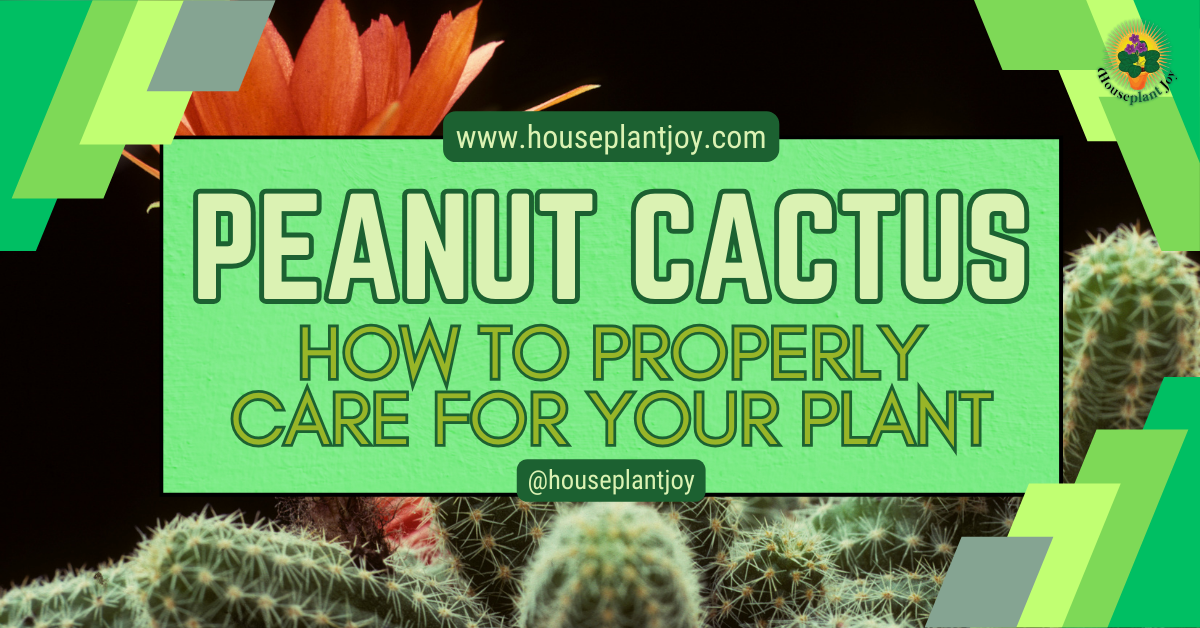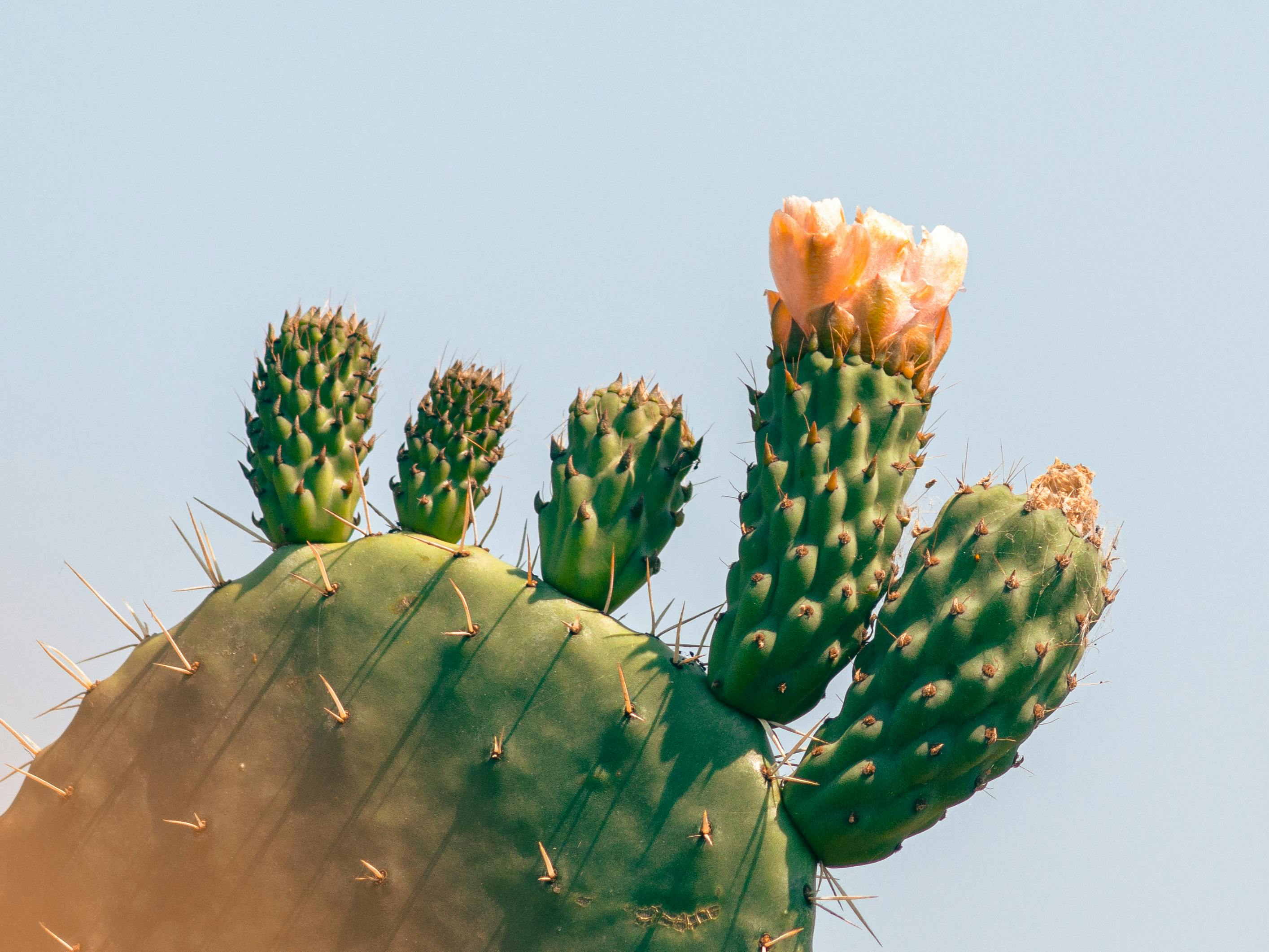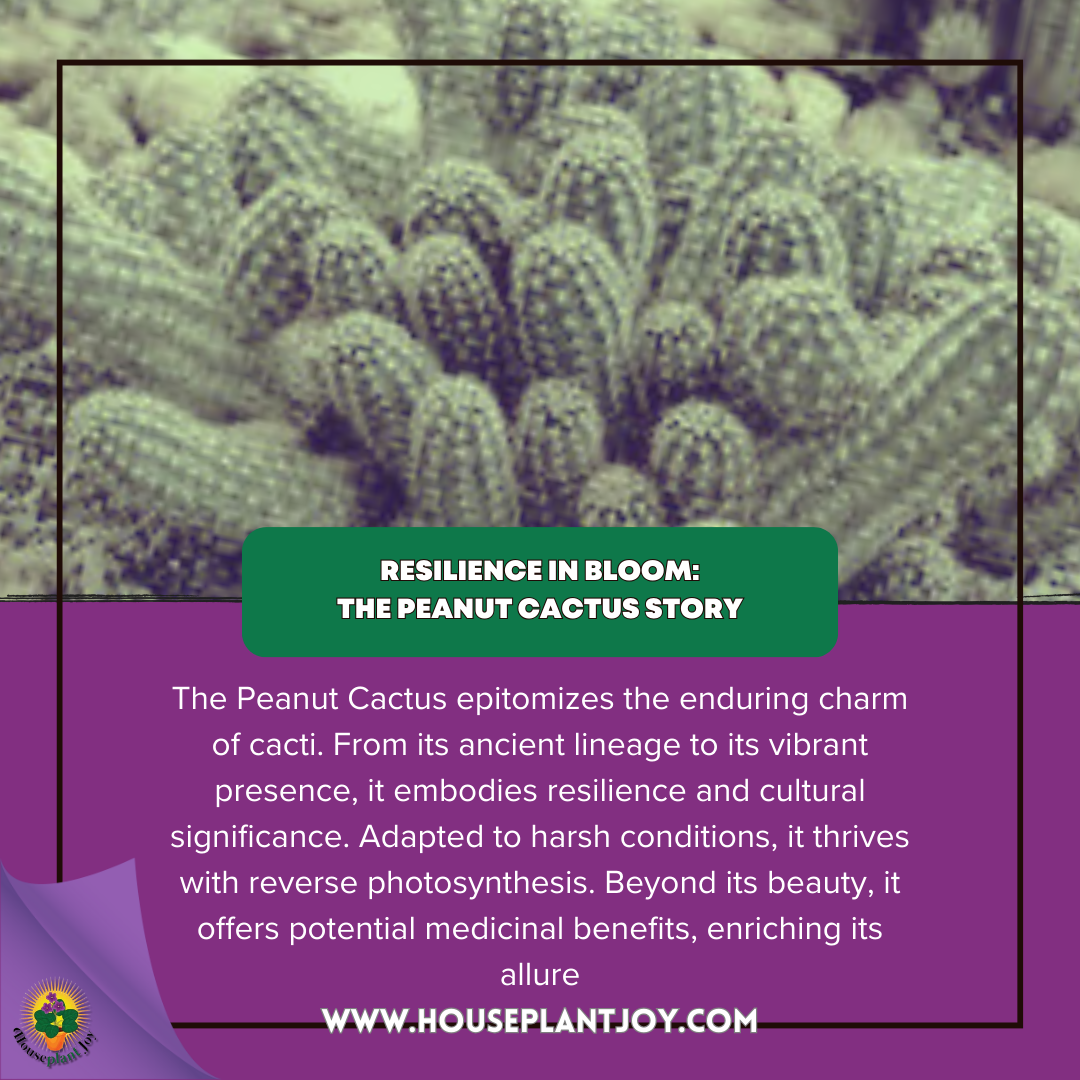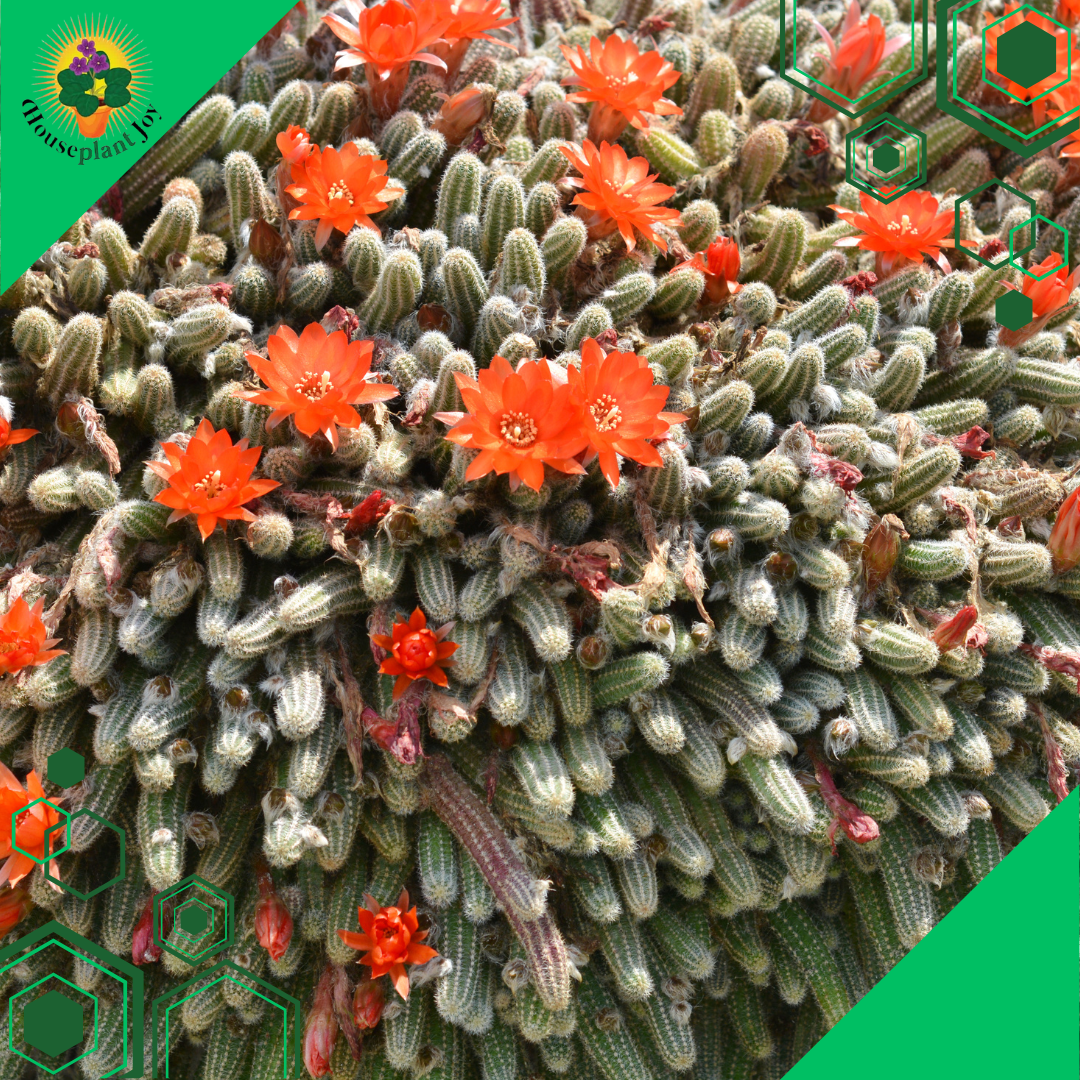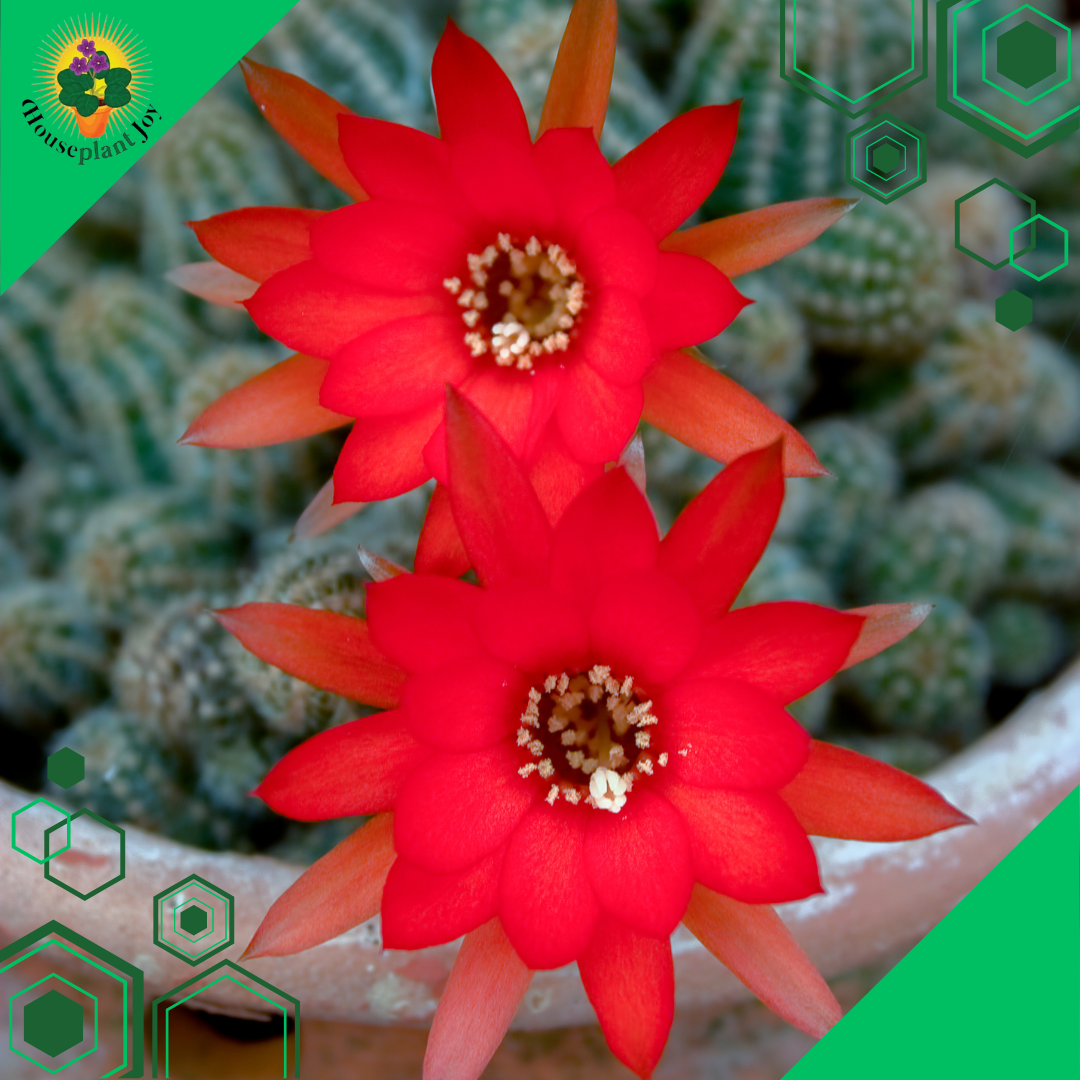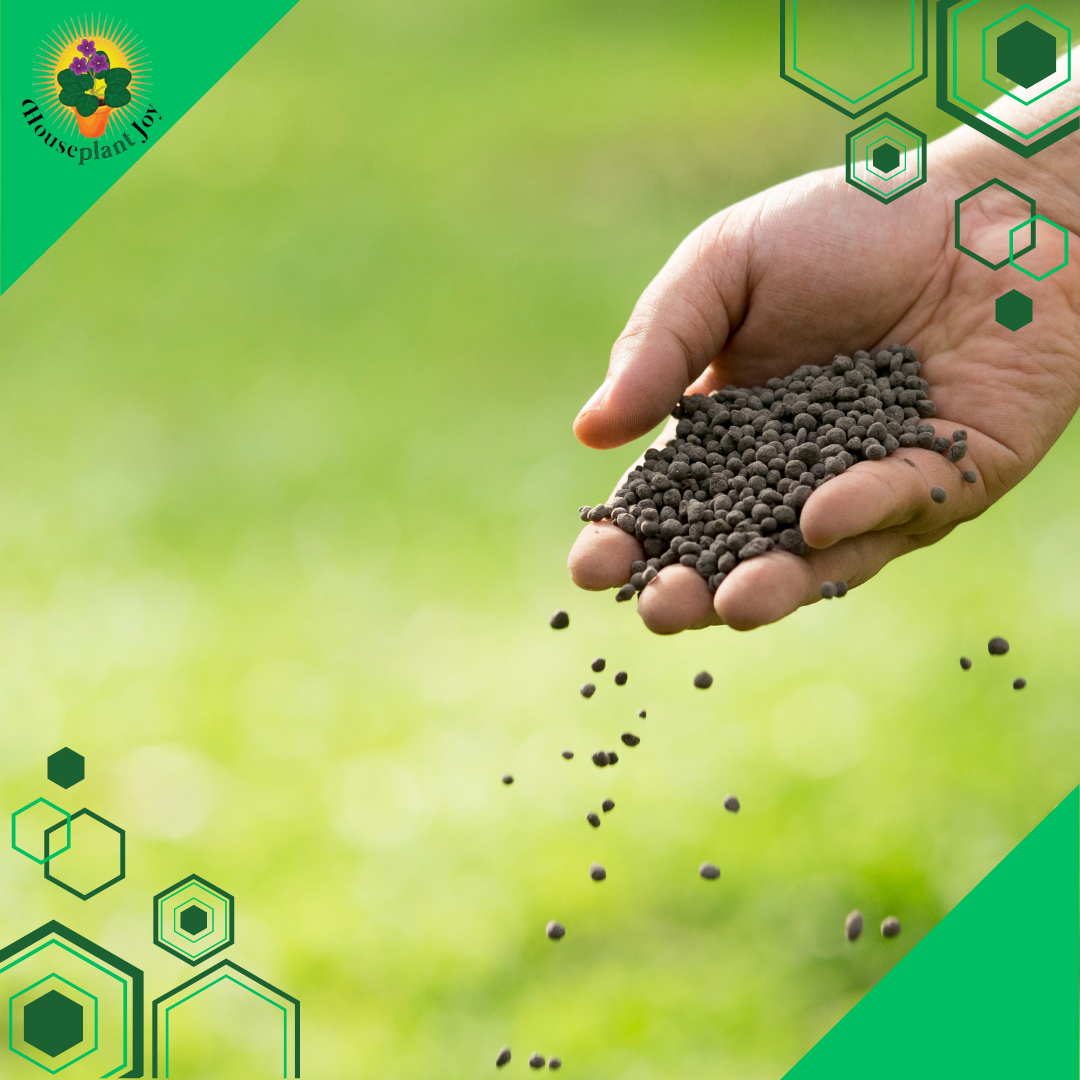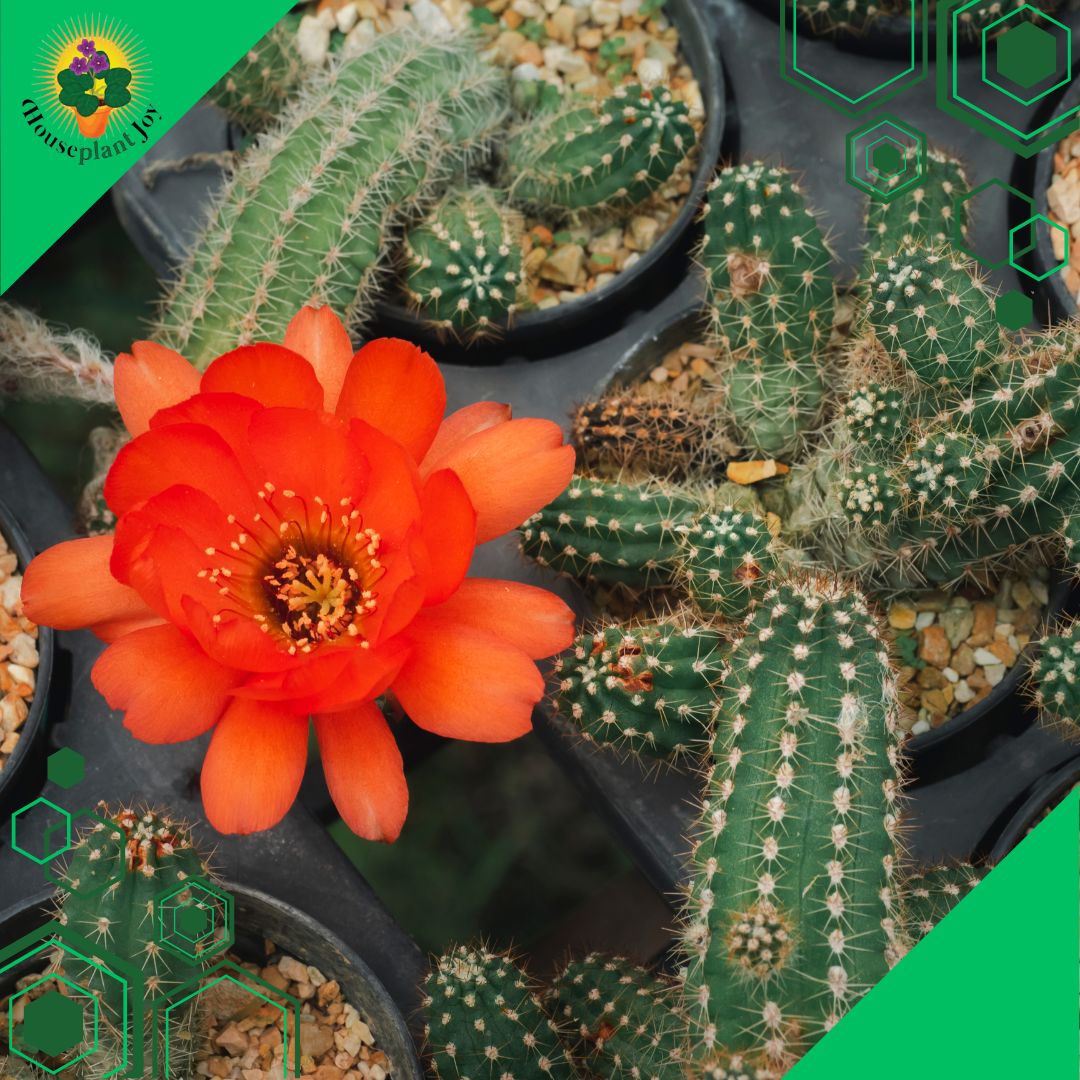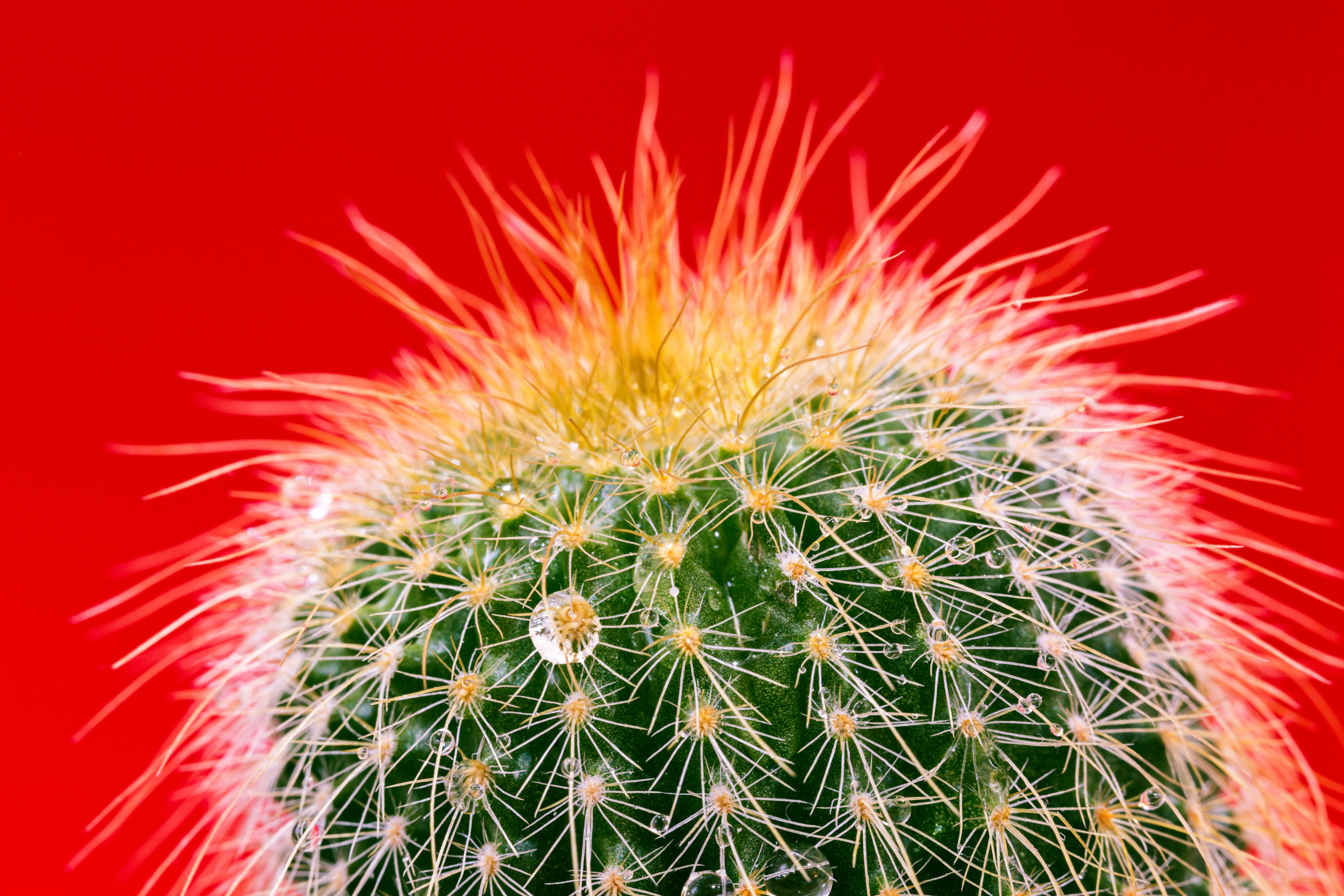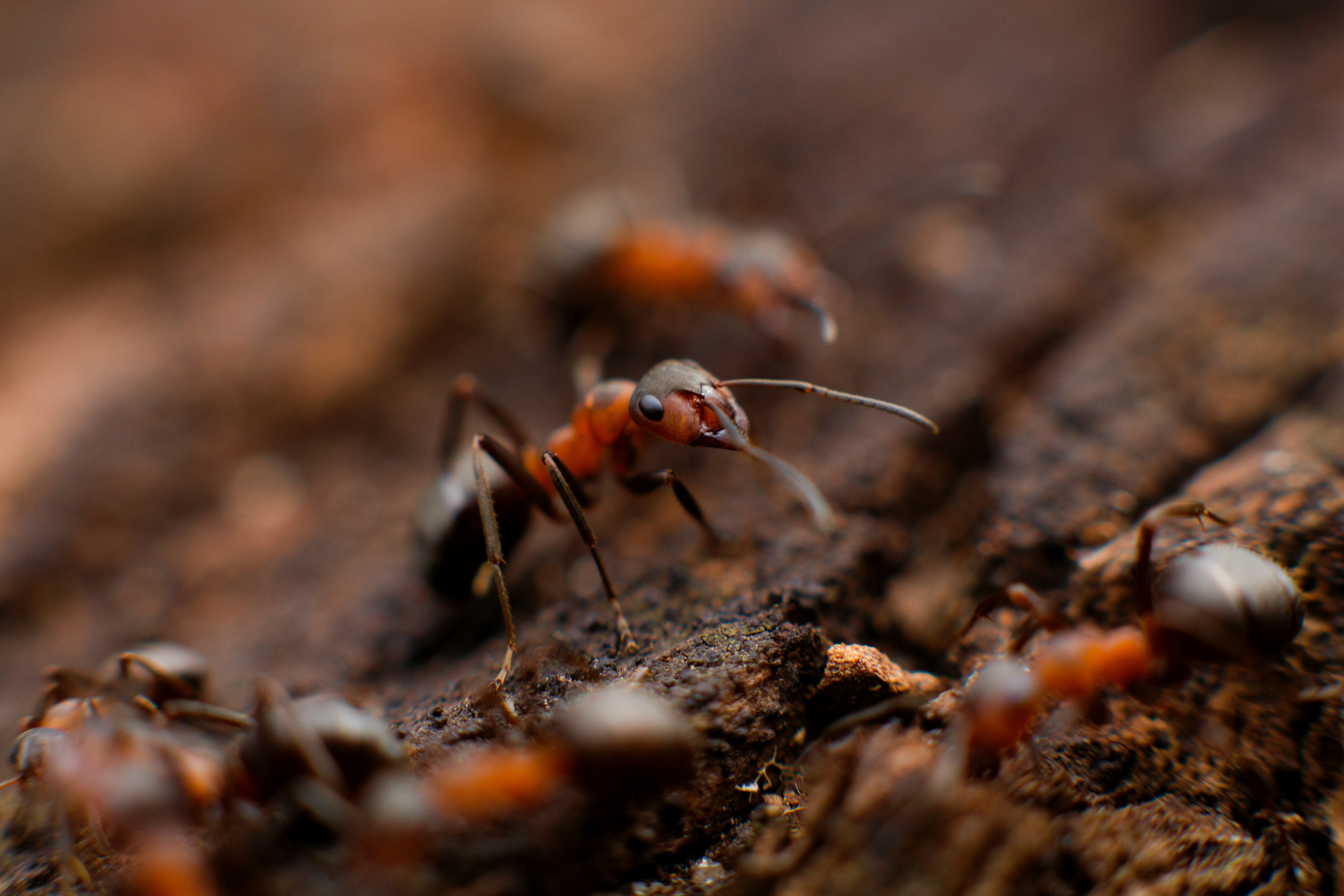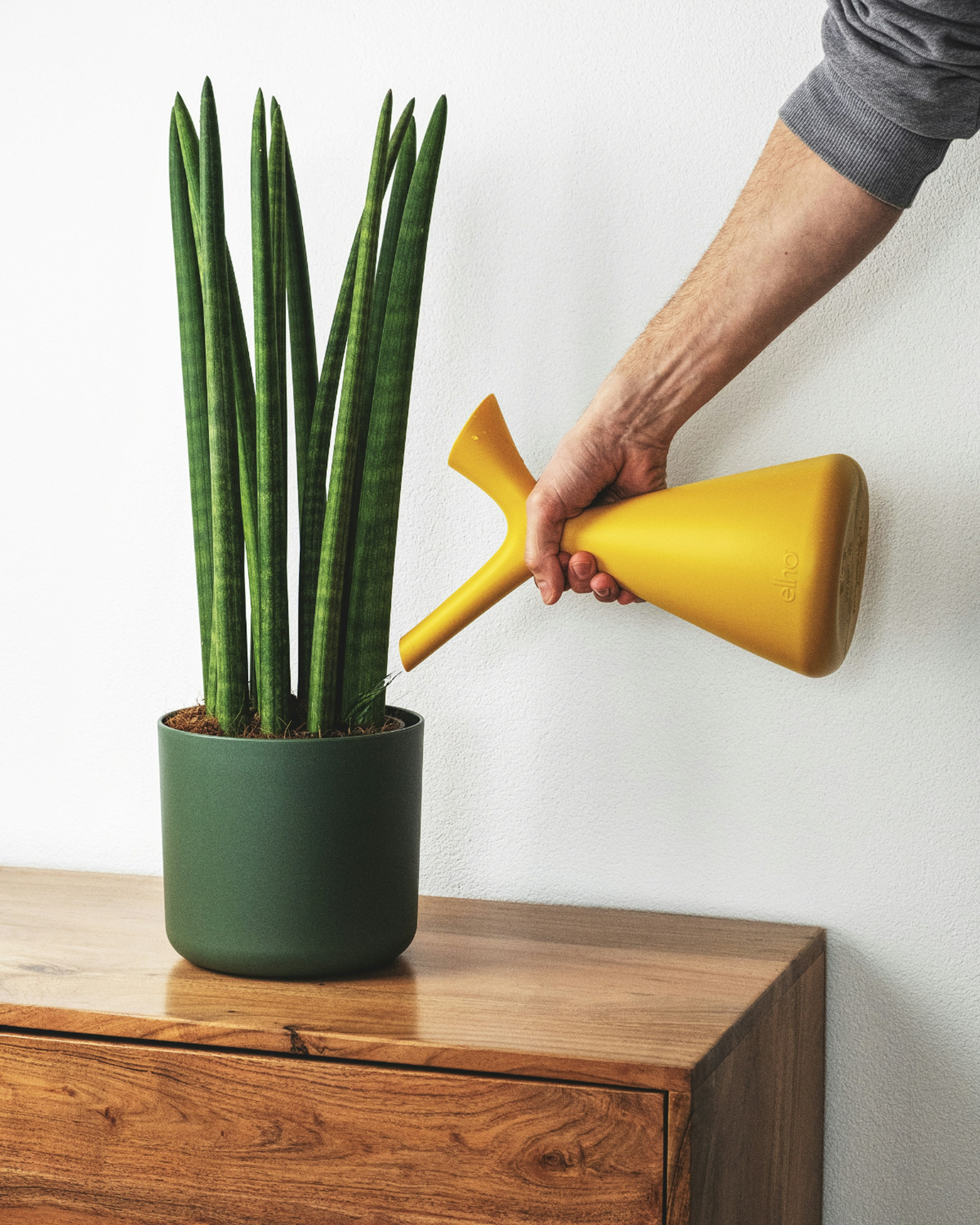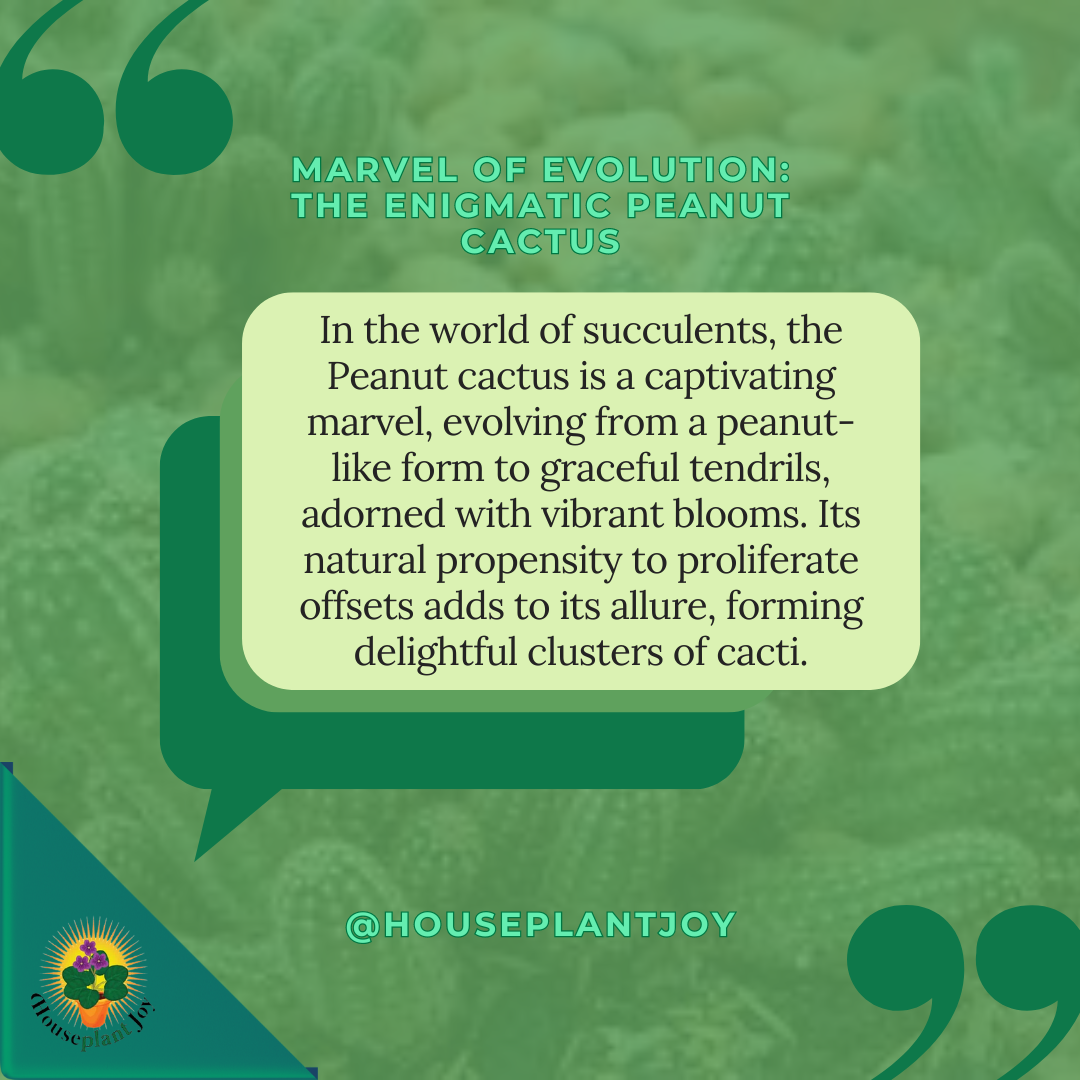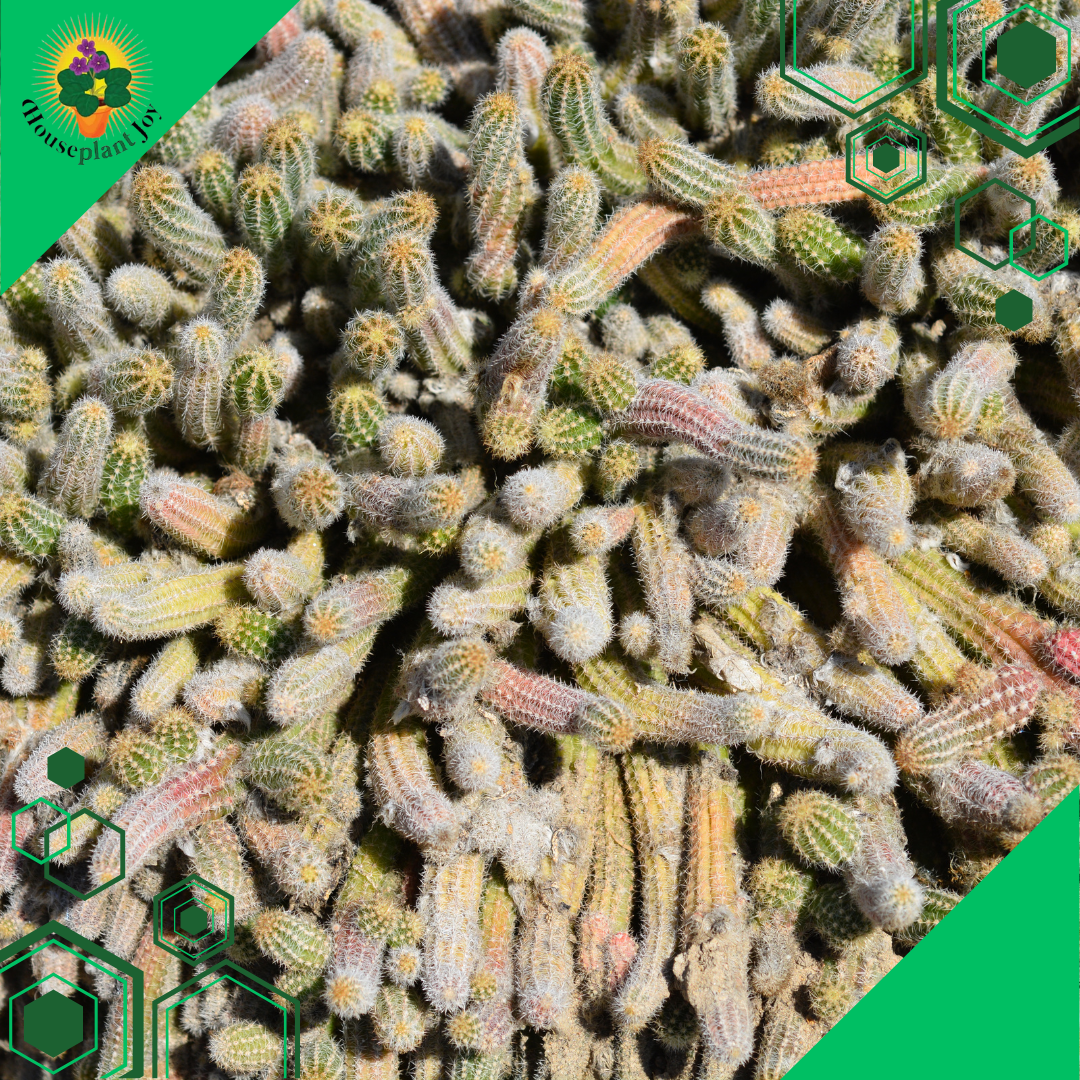HousePlantJoy is supported by our audience. When you purchase through one of our links, we may earn a small affiliate commission. As an Amazon Associate I earn from qualifying purchases. Your cost is not affected.
==================
Are you struggling to keep your peanut cactus healthy? Do you feel confused about how to care for it? Many people find it tricky to keep their peanut cactus thriving. But don’t worry, I’m here to help. I will break down the basics of peanut cactus care, so you can enjoy a happy, healthy plant without the stress.
Let’s start and make caring for your peanut cactus a breeze!
Key Highlights
- Echinopsis checereus, known as the Peanut Cactus, is a popular cactus known for its stems and vibrant red flowers- It thrives in full sun and blooms in the late spring and summer.
- The cactus requires well-drained and should be watered infrequently to avoid root rot.
- It can be propagated through cuttings or seeds and is relatively easy to care for.
- With proper care, the Peanut Cactus can be a beautiful addition to any succulent collection.
Mastering Peanut Cactus Care: Essential Steps for Success
So, you’re diving into the world of Peanut Cactus care? That’s awesome! These little guys, known scientifically as Echinopsis Chamaecereus or Chamaecereus Silvestrii, are truly something special. Originating from South America, they’ve captured the hearts of cacti lovers everywhere with their gorgeous red flowers and lush green stems. They’re not just any cactus—they’re a vibrant splash of color and life.
How to Get Your Peanut Cactus to Thrive
Peanut Cactus Loves The Full Sun
Now, if you want your Peanut Cactus to thrive, there are a few key things you need to keep in mind. First up, they love the full sun!—like, really love it. Full sunlight is their happy place, so make sure they get plenty of it. But just as important is good drainage. These plants hate having wet feet because it can lead to root rot, and trust me, you don’t want that. So, a well-draining setup is crucial.
Peanut Cactus Doesn’t Need Much Watering
Watering? Here’s where it gets interesting. They don’t need much. Infrequent water watering is the name of the game. It might seem a bit counterintuitive, but less is more here. Plus, they need a cool rest period to bloom beautifully. It’s like their little snooze button for an explosive flower show.
From the Echinopsis Genus
And did I mention they’re part of the Echinopsis genus? These are not your average cacti. They have this cool, globular shape with elongated tubercles that kinda look like peanuts—hence the name. They also pop out these vibrant flowers in various colors that can make any space pop.
Great Home Decorations
Their ornamental value is through the roof. With a branching growth habit and such a striking look, they’re perfect for anyone looking to add a bit of flair to their plant collection, whether you’re just starting or you’re a seasoned plant parent.
So, let’s discuss how to navigate these nuances and ensure your Peanut Cactus survives and thrives.
Preparing to Grow Your Peanut Cactus
Before growing your peanut cactus, gather essential supplies like well-draining potting soil and a suitable pot. Ensure your cactus is placed with plenty of bright sunlight and excellent drainage. Choosing a spot where the cactus can receive at least 6 hours of direct sunlight daily is important. This preparation sets the foundation for a successful cultivation process.
Essential Supplies
1. Well-Draining Potting Soil
The foundation of a healthy Peanut Cactus is well-draining potting soil. This plant is susceptible to root rot, so it’s important to provide a soil mix for quick drainage. Specialty cactus or succulent mixes are ideal, but you can also create your mix by combining regular potting soil with sand or perlite to enhance drainage.
2. Suitable Pot
Select a pot that complements the well-draining soil. A pot with drainage holes at the bottom is a must to avoid water accumulation. Terra-cotta pots are particularly suitable because they allow the soil to breathe and dry out more efficiently than plastic or ceramic pots.
3. Balanced Fertilizer
While Peanut Cacti are not heavy feeders, they do benefit from the occasional application of a balanced, water-soluble fertilizer during their active growing season in spring and early summer. Look for a fertilizer labeled for use on cacti and succulents, and follow the recommended dilution rates to avoid over-fertilization.
Choosing the Right Location
Select a spot for your peanut cactus that receives ample sunlight to thrive. Aim for at least 6 hours of direct sunlight daily, replicating its native South American habitat. Opt for areas with good drainage to prevent root rot, prioritizing sandy or rocky soil types.
While it enjoys sunlight, some partial shade during extreme heat can benefit the plant. Consider the cactus’s growth habit and provide ample sun and space for its spreading green stems.
Step-by-Step Guide to Planting Your Peanut Cactus
Step 1: Soil Preparation
Ensure your peanut cactus thrives by beginning with proper soil preparation. Use a well-draining potting mix to avoid issues like root rot. A blend with excellent drainage, like one tailored for cacti, will help your plant flourish. Prioritize a mix that allows excess water to escape easily, preventing waterlogged soil. A sandy mixture with minimal organic material is optimal. Consider adding perlite or sand to enhance drainage and aeration for your cactus. Soil preparation sets the foundation for a healthy peanut cactus.
Step 2: Pot Selection and Setup
When selecting a pot for your Peanut Cactus, prioritize functionality over aesthetics. Opt for a pot with drainage holes to prevent root rot. Consider a pot that is slightly larger than the plant’s current size to accommodate growth. Ensure the pot is filled with well-draining soil suitable for cacti to promote healthy root development. Set up the pot in a location with adequate sunlight exposure according to the cactus’s light requirements. This step is crucial in providing a conducive environment for your Peanut Cactus to thrive.
Step 3: Planting Your Cactus
Select a suitable pot considering your Peanut Cactus’s size. Ensure the container has proper drainage to prevent root rot. Fill it with well-draining potting soil, leaving enough room for the roots. Gently place the cactus in the center, adjusting its position carefully. Cover the roots with soil, pressing lightly to secure the new plant together. Avoid watering immediately after planting to prevent potential issues. Allow your cactus to settle in its new home before introducing moisture.
Caring for Your Peanut Cactus
Watering Techniques and Schedule
To ensure the optimal growth of your peanut cactus, adopt a watering schedule that aligns with its requirements. During the growing season, water sparingly when the top inch of soil feels dry. In the period of cool rest, reduce watering to mimic its natural environment.
Overwatering plants can lead to root rot, so err on the side of underwatering. Balancing moisture levels is crucial for the health of your plant, promoting robust growth and vibrant blooms. Stay attentive to its watering needs to enjoy a thriving flowering peanut cactus.
Managing Sunlight and Shade
To effectively manage sunlight and shade for your peanut cactus, ensure it receives around 4-6 hours of direct sunlight daily, mimicking its natural habitat in South America. If in extreme heat, consider partial shade protection. Balance is key; avoid prolonged exposure that may scorch the cactus.
Monitor leaf color – a healthy green signals sufficient light. Keep an eye out for stretched stems, indicating inadequate sunlight. Adjust positioning accordingly to maintain optimal growth conditions. Remember, too much direct sunlight can harm your delicate succulent.
Temperature Considerations for Optimal Growth
To ensure optimal growth of your peanut cactus, it is crucial to consider temperature factors. Peanut cacti thrive in warm climates, originating from South America. They prefer temperatures around 70-80°F during the growing season in late spring and early summer.
Avoid exposing them to extreme heat or frost, as these can damage the plant. Keep your cactus in a location with stable temperatures to promote healthy growth and vibrant blooms. Temperature stability is key to the successful cultivation and bloom of your peanut cactus.
Troubleshooting Common Peanut Cactus Problems
Dealing with pests like mealybugs and fungal diseases is common when cultivating peanut cacti. To address overwatering issues leading to root rot, ensure great drainage and water infrequently.
If facing problems with blooming or growth, check if the plant receives sufficient sunlight and balanced fertilizer. Watch out for signs of stress during extreme heat or frost conditions. By promptly tackling these issues, you can help your peanut cactus thrive and flourish.
Photo by Mikhail Vasilyev on Unsplash
Dealing with Pests and Diseases
To safeguard your peanut cactus from pests and diseases, ensure proper ventilation and avoid overwatering to prevent root rot. Watch out for mealybugs, common cactus pests that can harm your plant. In case of infestation, gently wipe affected areas with alcohol to eliminate these pests.
Additionally, be cautious of fungal diseases, especially in humid conditions. Promptly address any signs of fungal issues by adjusting watering practices and enhancing airflow around the plant. Regularly inspect your peanut cactus to catch and treat any problems early.
Addressing Overwatering Issues
Overwatering can harm your peanut cactus, leading to root rot and other problems. To address overwatering, ensure your cactus is planted in a well-draining potting mix and the container has drainage holes. Allow the soil to dry out between waterings to prevent excess moisture retention around the roots.
Adjust your watering frequency based on the plant’s specific needs, considering factors like temperature and humidity. Monitoring the soil moisture level regularly can help prevent overwatering and maintain the health of your peanut cactus.
Peanut Cactus Propagation Methods
Propagating Through Cuttings
To propagate this species through cuttings, choose a healthy stem, let it dry for a few days, then plant it in well-draining soil, providing indirect sunlight. Keep the soil lightly moist until roots develop. This method efficiently multiplies peanut cacti and is straightforward.
Successful propagation demands patience and attention to the plant’s needs. It’s a rewarding way to expand your peanut cactus collection.
Seed Propagation Tips
Seed propagation for peanut cacti involves collecting fresh seeds and sowing them in well-draining soil. Ensure the soil is lightly moist, covering the seeds lightly with a thin layer of soil. Place the pots in a warm, bright location to encourage germination.
It’s essential to mist the soil lightly to keep it moist during the germination process. Once the seeds have sprouted, gradually introduce them to direct sunlight to promote healthy growth.
Achieving Peanut Cactus Perfection
After following this guide, you’ll be ready to cultivate your Peanut Cactus successfully. Remember key care aspects: proper light, water management, and occasional fertilization.
Watch out for common garden issues like overwatering and pests. Learn propagation techniques to expand your collection.
By integrating these practices, you can enjoy Peanut Cactus flower blooms and appreciate their distinct characteristics, like striking red flowers and unique growth habits.
Blossoming Beauties: Tending to Your Peanut Cactus and More
We’ve explored the intricate world of caring for peanut cactus plants, from their love for full sun to their aversion to overwatering. We’ve delved into the importance of well-draining soil, the nuances of watering schedules, and the joy of propagation. Hopefully, armed with this knowledge, you’re now ready to embark on your own peanut cactus journey, nurturing these vibrant plants to flourish in your home.
As you tend to your cacti, remember to embrace the unique beauty of each plant, with their striking red flowers and distinctive growth habits. Keep a watchful eye on sunlight exposure, moisture levels, and signs of pests or diseases to ensure the health and vitality of your botanical companions.
I encourage you to share your experiences and thoughts on peanut cactus care, as well as any pictures of your favorite cactus plants or other green friends. Let’s create a community where we can learn from each other’s successes and challenges, celebrating the beauty and resilience of these wonderful plants.
Thank you for investing your time and effort in learning about peanut cactus care. May your gardening endeavors be filled with joy, growth, and a thriving collection of beautiful plants!
Frequently Asked Questions
How Often Should I Water My Plant?
Water your peanut cactus sparingly, letting the soil dry between waterings. Typically, aim to water every 2-3 weeks in the growing season, reducing frequency in winter.
Can Peanut Cactus Grow Indoors?
Yes, peanut cacti thrive indoors with enough sunlight and well-draining soil. Choose a sunny spot, water occasionally, and ensure good ventilation for successful indoor growth. Size matters when selecting a container.
When Is the Best Time to Propagate Your Cactus?
The best time to propagate peanut cactus is during the spring or summer months when the plant is actively growing. Avoid propagating during the dormant winter period. This ensures successful rooting and establishment of new plants.
Some Articles You Might Like
If you want to read more fun things about cacti plants then here are some articles I think you would enjoy.

